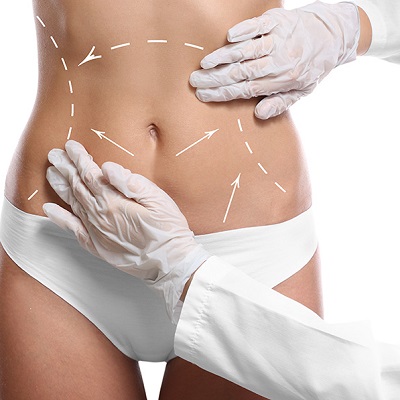Introduction
In the pursuit of a well-defined, sculpted physique, many individuals turn to liposuction as a solution to remove stubborn fat that resists diet and exercise. Liposuction is a popular cosmetic procedure designed to contour the body by eliminating localized fat deposits. However, not all liposuction techniques are created equal, and choosing the right one can significantly impact the results and recovery process. This article delves into the most effective Best Liposuction Muscat techniques available today, providing a comprehensive guide for those considering this transformative procedure.
Traditional Liposuction
Overview
Traditional liposuction, also known as suction-assisted lipectomy (SAL), is one of the oldest and most widely recognized techniques. It involves making small incisions in the skin and using a thin, hollow tube called a cannula to suction out fat deposits. The cannula is moved back and forth to break up the fat before it is suctioned out.
Advantages
- Proven Results: Traditional liposuction has a long history of successful outcomes, with well-documented results.
- Effective for Large Areas: This technique is effective for larger areas of fat removal, such as the abdomen, thighs, and buttocks.
- Lower Cost: Compared to newer technologies, traditional liposuction is generally less expensive.
Disadvantages
- Invasiveness: The procedure is more invasive than some newer techniques, which can lead to a longer recovery time.
- Potential for Irregularities: There is a risk of uneven fat removal, which may result in contour irregularities.
Tumescent Liposuction
Overview
Tumescent liposuction is an advanced form of traditional liposuction that involves injecting a sterile solution (tumescent fluid) into the target area before fat removal. This solution contains saline, lidocaine (a local anesthetic), and epinephrine (to reduce bleeding).
Advantages
- Reduced Bleeding: The epinephrine in the tumescent solution minimizes bleeding, leading to a lower risk of bruising and swelling.
- Enhanced Pain Management: The lidocaine provides effective local anesthesia, reducing the need for general anesthesia and improving patient comfort.
- Faster Recovery: The use of tumescent fluid can lead to a quicker recovery time compared to traditional liposuction.
Disadvantages
- Limited Fat Removal: Tumescent liposuction is generally best suited for smaller areas and may not be ideal for large volume fat removal.
- Potential for Fluid Imbalance: In rare cases, excessive fluid can lead to imbalances in the body, although this is typically managed effectively by experienced practitioners.
Ultrasound-Assisted Liposuction (UAL)
Overview
Ultrasound-assisted liposuction (UAL) uses ultrasonic energy to liquefy fat cells before they are removed. This technique involves inserting a specialized cannula that emits ultrasound waves, which break down fat cells and make them easier to suction out.
Advantages
- Effective for Fibrous Areas: UAL is particularly effective for areas with dense, fibrous fat, such as the back or male chest.
- Improved Contouring: The liquefaction of fat can result in smoother contours and less risk of irregularities.
- Reduced Trauma: The ultrasonic energy can reduce trauma to surrounding tissues, leading to less bruising and swelling.
Disadvantages
- Complex Procedure: UAL requires specialized equipment and training, making it more expensive and less widely available.
- Risk of Thermal Injury: There is a small risk of thermal injury to the skin or underlying tissues due to the heat generated by the ultrasonic waves.
Laser-Assisted Liposuction (LAL)
Overview
Laser-assisted liposuction (LAL) uses laser energy to melt fat before it is suctioned out. The procedure involves inserting a thin laser fiber through a small incision, which emits laser energy to break down fat cells.
Advantages
- Skin Tightening: The laser energy stimulates collagen production, which can lead to tighter, firmer skin in the treated area.
- Minimized Bruising: LAL typically results in less bruising and swelling compared to traditional liposuction.
- Precise Fat Removal: The laser allows for precise fat removal, which can improve overall contouring.
Disadvantages
- Higher Cost: The advanced technology used in LAL makes it more expensive than traditional methods.
- Limited Applicability: LAL may not be suitable for very large areas or for patients with significant amounts of excess fat.
Power-Assisted Liposuction (PAL)
Overview
Power-assisted liposuction (PAL) utilizes a vibrating cannula to assist in fat removal. The vibrations help to break up fat cells and make them easier to suction out, reducing the manual effort required by the surgeon.
Advantages
- Efficient Fat Removal: The vibrating cannula allows for quicker and more efficient fat removal, which can reduce overall procedure time.
- Reduced Surgeon Fatigue: The power-assisted device can help reduce the physical strain on the surgeon, leading to improved precision.
- Less Trauma: PAL often results in less trauma to surrounding tissues and can lead to a quicker recovery.
Disadvantages
- Increased Cost: The specialized equipment used in PAL can lead to higher costs for the patient.
- Potential for Over-Contouring: If not performed carefully, the efficiency of PAL can lead to over-contouring and irregularities.
Conclusion
Selecting the best liposuction technique depends on various factors, including the patient's goals, the specific area of fat to be treated, and the expertise of the surgeon. Traditional liposuction and tumescent liposuction remain popular due to their proven effectiveness and lower cost. Meanwhile, advanced techniques like ultrasound-assisted, laser-assisted, and power-assisted liposuction offer additional benefits such as enhanced contouring, skin tightening, and reduced recovery times.
Consulting with a qualified cosmetic surgeon is crucial to determine the most suitable technique for achieving a sculpted body. With the right approach, liposuction can be a powerful tool in the quest for a more defined and aesthetically pleasing physique.





Comments